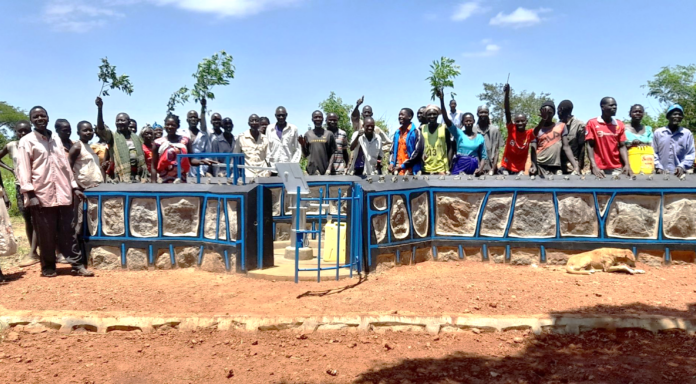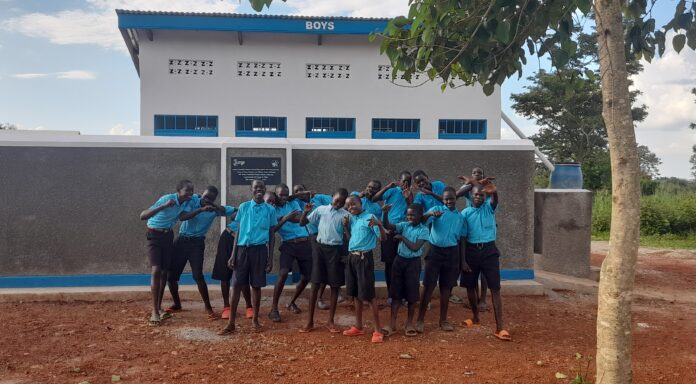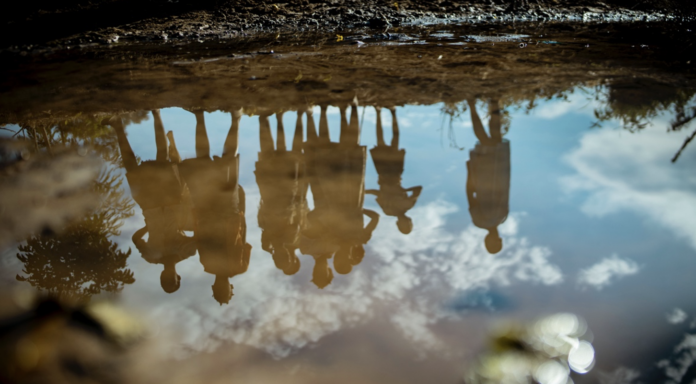When I hear thunder, I think of my garden soaking up all that rainwater and I know my rain barrels will fill up so I can water well after the storm. We use mostly rainwater for our garden beds, planters and potted plants, including our homemade lettuce table (pictured here) – and we enjoy the rewards (fresh salads, served daily!).
My goal is to use as little tap water as possible for our garden and what I jokingly call our “crops.” Our crops include a 3-tiered planter where we’re growing herbs, arugula, garlic, chives and peas; a lettuce table (made of scrap wood by my super stepdad); and a half dozen pots packed with cherry and grape tomatoes, hot peppers and more herbs.
I’m relatively new to rainwater harvesting’ but the practice of collecting rainwater for personal and household use is not a new one. People around the world have created systems – from simple to quite complex – for collecting and later using natural rainwater for watering plants, pets and even people.
Clay barrels were used to catch and hold water as early as the 3rd Century B.C., according to this ezine article on the history of rainwater barrels. In ancient Greece and Rome, cisterns or caches were built underground (such as the one at right) to collect water and help cool the surrounding courtyard through evaporation.
The barrel itself started being used for transporting wine, oils and other liquids during the Roman Empire around 300 A.D. The barrel became the standard shipping containers used for many materials – including nails, coins, whiskey, wine and, eventually, water.
What is a rain barrel? A rain barrel is a system that collects and stores rainwater from your roof that would otherwise be lost to runoff and diverted to storm drains and streams, according to the EPA. A typical rain barrel is a 55-gallon drum with a hose connected to a gutter downspout on the side of a building or home.
Since lawn and garden watering make up about 40% of total water use in America during the summer (per the EPA), using a rain barrel can help significantly to reduce household use of treated water and keep additional rainwater from washing down the storm drains and into streams.
A rain barrel can save an average homeowner about 1,300 gallons of water during peak summer months, which saves money and energy from the decreased demand for treated water (EPA). Rain barrels are an easy way to get a consistent supply of fresh water for outdoor use, FREE.
Natural rainwater is also better for plants and gardens because it is untreated and naturally “soft,” so it doesn’t have things like minerals or chlorine, which is used to disinfect and treat city water that goes inside the home.
Today, you can buy rain barrels that are functional and stylish, such as the one we bought at a local hardware store (right) that has a pleasant shape and look, and a built-in planting area on top. I put in a variety of curly-leafed coleus plants for a pop of color.
The end of the hose on this design has a small lever to open and close it and we installed a clip to hold it up so it doesn’t drip. It’s connected via another diversion hose to our gutter downspout so water enters from the side and no debris or bugs can get inside.
We’ve only got one issue with this rain barrel: low water pressure. We wait for watering cans to fill, which takes longer as the barrel empties out and the pressure gets lower. Partly, I blame the manufacturers and promoters of rain barrels for this because they almost always show rain barrels installed on the ground.
But to get rain barrels to really pour properly, you need help from gravity (much like the water towers and tanks I’ve written about) – and that means installing them off the ground. We put this lesson to use when we installed our second rain barrel and used a concrete block as its base. We’re going to raise the pretty rain barrel using cinder blocks as soon as it’s empty.
We got our 2nd rain barrel FREE from the City of Chicago when they installed a water meter in our home. Although not attractive, it works fine – and fast! – and fills watering cans 10 times faster than our prettier barrel (for now, at least) and it sits in the side yard so it doesn’t take away from the lovely views of the garden.
We have drip hoses installed in 2 parts of our yard and we connect the barrel to the drip hose for those beds and can water without wasting a drop or getting any on the sidewalk. It’s a good way to soak the soil to get deep into the plant root systems.
Every time we get a big storm in Chicago, I know I won’t have to turn on the outside tap to keep my garden green another week. And I can once again go outside and enjoy the lovely – and tasty – rewards we’ve grown by harvesting the rain.
Written By: Keri B. Lynch, Chicago-based freelance writer




